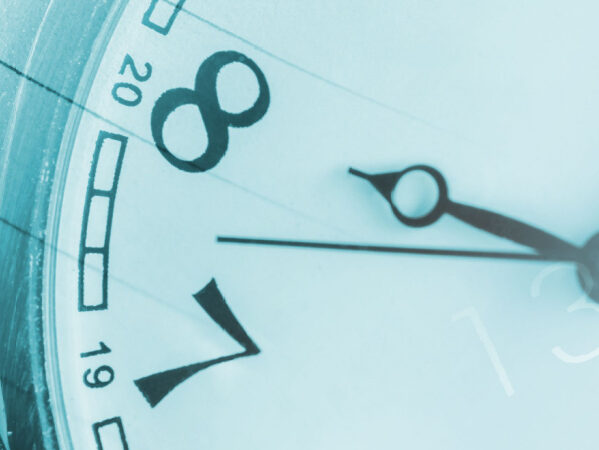Vyvanse is a common stimulant used to treat conditions like Attention Deficit Hyperactivity Disorder (ADHD) and binge eating disorder. Like other medications, it could be potentially misused.
Are you concerned that you’ve taken too high of a dose of Vyvanse? Some of the issues that can occur include the following:
Physical symptoms like rapid heart rate and high blood pressure
Psychological symptoms like heightened anxiety, hallucinations, or paranoia
Behavioral symptoms, such as obsessive or compulsive behaviors
If you are prescribed Vyvanse and feel that your dose is too high, contact your doctor immediately. If you are worried that your symptoms indicate a medical emergency, call 911 or get to the emergency room.
Understanding Vyvanse Dosages & Formulations
Vyvanse comes in different formulations and doses.
Formulation Options
Vyvanse comes in capsules and chewable tablets in a range of doses.[4]
Vyvanse Capsules
| Dosage (mg) | Body Color | Cap Color | Imprint |
|---|---|---|---|
| 10 mg | Pink | Pink | S489 / 10 mg |
| 20 mg | Ivory | Ivory | S489 / 20 mg |
| 30 mg | White | Orange | S489 / 30 mg |
| 40 mg | White | Blue Green | S489 / 40 mg |
| 50 mg | White | Blue | S489 / 50 mg |
| 60 mg | Aqua Blue | Aqua Blue | S489 / 60 mg |
| 70 mg | Blue | Orange | S489 / 70 mg |
Vyvanse Chewable Tablets
| Dosage (mg) | Shape | Color | Imprint |
|---|---|---|---|
| 10 mg | Round | White to off-white | 10 / S489 |
| 20 mg | Hexagonal | White to off-white | 20 / S489 |
| 30 mg | Arc Triangular | White to off-white | 30 / S489 |
| 40 mg | Capsule Shaped | White to off-white | 40 / S489 |
| 50 mg | Arc Square | White to off-white | 50 / S489 |
| 60 mg | Arc Diamond | White to off-white | 60 / S489 |
ADHD Treatment with Vyvanse
When prescribed for the treatment of ADHD in both adults and children between the ages of 6 and 12, treatment usually begins with 30 mg each morning.[5] If more is needed, the dose may be increased by 10 or 20 mg each week, up to a maximum dose of 70 mg per day. Depending on the symptoms experienced, the dose may be anywhere from 30 mg to 70 mg per day.
Binge Eating Disorder Treatment With Vyvanse
When prescribed for the treatment of binge eating disorder (BED) in adults, dosing usually starts at 30 mg every morning but can be increased by 20 mg per week if needed, with a maximum dose of 70 mg per day.[2] For BED, final dosing of 50 mg to 70 mg per day is recommended.[5]


How Long Does Vyvanse Stay in Your System?
Considerations
For some people, Vyvanse will not be a good solution no matter what symptoms are experienced.
For example, no one under the age of 6 should take the medication, as no research has been done on its efficacy and safety. Women who are pregnant or breastfeeding should not take Vyvanse or any stimulant medication, as it can be transmitted to the child through the bloodstream in utero or through breast milk.[2]
For those living with end-stage renal disease, the daily dose should not exceed 30 mg per day. Those with renal impairment should not exceed 50 mg per day.[2]
Additionally, those who are living with co-occurring conditions, such as cardiac disease, hypertension, or mental health issues defined by psychotic reactions, and those in recovery from addiction should avoid taking Vyvanse.
Tips for Using Vyvanse Safely
Vyvanse should be taken in the morning, and second doses should be taken no later than early afternoon in order to avoid issues with insomnia.
Both chewable tablets and capsules can be taken with or without food.[5]
Capsule doses should not be divided but swallowed whole or opened and the contents dissolved in water, creating a solution that is drinkable for those who do not like swallowing pills or chewing tablets.
If the capsule solution option is chosen, it should be ingested immediately and not stored.
The drug should not be taken within 14 days of taking MAO inhibitors.
What Are the Signs Your Vyvanse Dose Is Too High?
Signs that a Vyvanse dose is too high may vary based on the amount taken, the method of ingestion, and whether or not other medications are being taken or there are underlying medical or mental health symptoms.
In general, however, some signs that may indicate that your Vyvanse dose is too high may include the following:
Physical symptoms like dry mouth, rapid breathing, and dilated pupils
Cardiac events, such as rapid heart rate, chest pain, high blood pressure, and heart palpitations
Shifting mental states that may include agitation, confusion, and paranoia
Physical Symptoms of Excessive Vyvanse
A number of physical effects can indicate that the amount of Vyvanse in the body is overwhelming the system. These may be mild, moderate, or severe. They could include things like a high body temperature, rapid breathing, dry mouth, dilated pupils, and an increased level of alertness or energy.
In more serious cases, toxic levels of Vyvanse may cause skin flushing. If the drug is injected, there may be abscesses or infection at the injection site.
Cardiovascular Issues From Too Much Vyvanse
Vyvanse is a stimulant drug, and as such, it can increase heart rate and raise blood pressure. If this is severe enough, palpitations or arrhythmia can result along with chest pain. In the most severe cases, high doses of Vyvanse can lead to a hypertensive emergency, stroke, or sudden death.
Shifting Mental States After Vyvanse Overdose
An altered mental state can be indicative of taking too much Vyvanse. While high energy may be a sign of the problem, this can turn into agitation, hyperactivity, confusion, and even extreme psychosis characterized by paranoia.
What to Do if Your Dose Is Too High
If your dose of Vyvanse is too high for you to feel comfortable or if you suffer from undue side effects, take these steps:
Double check with the pharmacist to find out if other medications you are taking may be impacting the effect of Vyvanse.
Talk to your doctor about what you are experiencing when you take the prescribed dose of Vyvanse. Make sure to disclose all underlying health conditions, including mental health issues, and all other medications and supplements you are taking.
If there is no discernible cause for your uncomfortable experience with Vyvanse and your dose is indeed too high, your doctor will likely lower your dose or suggest trying a new medication.
If you or someone you know is concerned about the effects of Vyvanse or suspect the dosage may be too high, we’re here to help. Reach out to our team today to learn more about treatment options and support.
Yes. Using Vyvanse in a way other than your doctor intended, or taking more than your recommended prescribed amount can lead to an overdose. A Vyvanse overdose can be a life-threatening medical emergency, leading to complications such as cardiovascular problems, seizures, and confusion. In severe cases, it can be fatal.
The maximum amount of Vyvanse that can be taken safely is 70 mg per day. This applies to both adults and children.
If you experience side effects from taking Vyvanse, you can expect them to last anywhere from a few hours to a few days. The duration will depend on how much of the medication you took and your unique body composition.
- Adult ADHD medications and their cardiovascular implications. Sinha A, Lewis O, Kumar R, Yeruva SLH, Curry BH. Case Reports in Cardiology. 2016:1-6.
- Pediatric postmarketing pharmacovigilance and drug utilization review drug use analyst. Cheng C, Wong J, Diak IL, Gill R, Chai G, Kortepeter C. U.S. Food and Drug Administration. Published 2016. Accessed February 22, 2024.
- Methylphenidate induced obsessive compulsive symptoms: A case report and review of literature. Grover S, Jhanda S, Singla N. Journal of Pediatric Neurosciences. 2016;11(4):316.
- Highlights of prescribing information. U.S. Food and Drug Administration. Published 2017. Accessed February 22, 2024.
- Novel pharmacologic treatment in acute binge eating disorder – role of lisdexamfetamine. Guerdjikova AI, Mori N, Casuto LS, McElroy SL. Neuropsychiatric Disease and Treatment. Published April 2016:833.
- Amphetamine toxicity. Sarayu Vasan, Olango GJ. National Institutes of Health. Published November 5, 2019. Accessed February 22, 2024.











